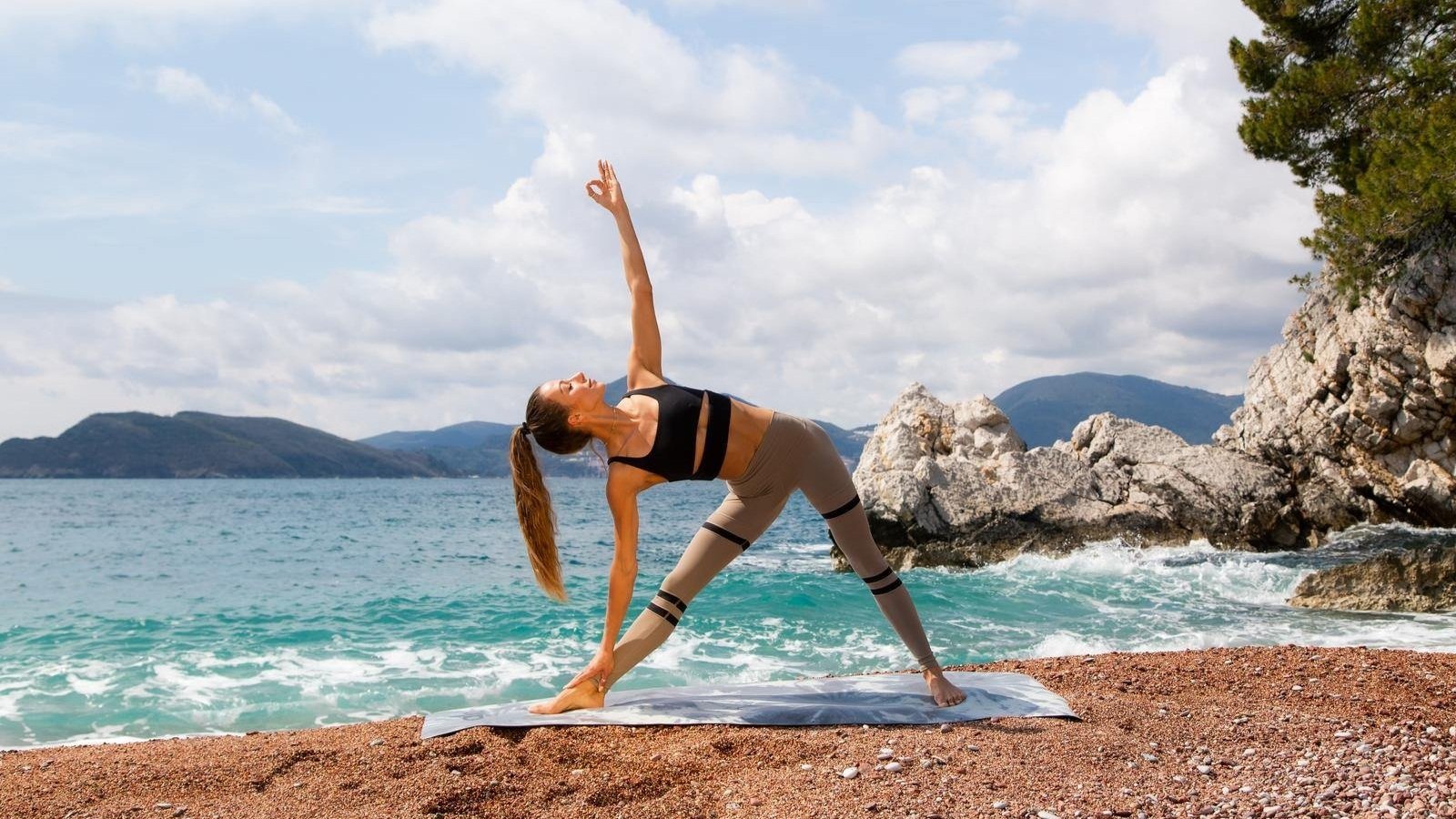Pose Breakdown: Triangle Pose
What’s your angle? In Triangle Pose (Trikonasana), also called Extended Triangle Pose (Utthita Trikonasana), you move your body to create a giant triangle — plus a couple of smaller ones. This tidy but wide-open pose is a wonderful exercise in taking up space, and a great jumping-off point to bigger postures like Half Moon.
It’s a spinal stretch and a hip opener, but between your narrow base and spinal twist, it’s also a gentle balancing exercise. Your bottom arm is typically not load-bearing, but keep a block handy if you’re having trouble catching your balance, need support for a long hold, or just feel like it.
If you practice Vinyasa or Ashtanga yoga, this is probably a familiar shape. For Ghosh and Bikram yogis, it could be a slight variation from what you’re used to.
Benefits of Triangle Pose
Improves balance and stability
Lengthens your spine
Strengthens your core
Opens your hips and shoulders
Reduces stress
Contraindications
Avoid this pose or talk to your doctor if you have injuries to your spine, hips, or hamstrings.
How to Do Triangle Pose
Start in Warrior II Pose with your right leg forward.
Activate your left thigh and begin to straighten your right leg, pressing down into both feet.
At the same time, hinge at your hips and tilt your upper body toward your right leg, keeping your chest open and lengthening your spine.
Reach your right arm toward the ground and open your body to the left, reaching your left arm toward the sky. Activate your triceps.
Keep your right hand open. It could touch the ground on either side of your leg, grab your big toes, rest on a block, or hover above the ground.
Turn your gaze up to your left hand if it’s comfortable, or look forward or down.
Follow Up Poses for Triangle Pose
Bound Triangle Pose
Revolved Triangle Pose
Pyramid Pose
Wide-Legged Forward Fold
How to Modify Triangle Pose with Props
To modify Triangle Pose with a block, place a block under your bottom hand for extra support. You can also rest your front hand gently on your front shin or thigh. To deepen in the pose, find a half bind with your top arm by wrapping it behind your back.
Triangle Pose Variations
Revolved Triangle
In Revolved Triangle, face the other direction so your opposite-side hand is reaching toward the ground — that’s your left hand if your right foot is forward. This will give you a deeper spinal twist.
Bound Triangle
For Bound Triangle — and a deeper chest and shoulder stretch — clasp your hands around your front thigh.
Triangle Pose Meaning and Background
Triangle Pose can mean different things in different schools of yoga, but the kind we’re used to practicing in most modern Western yoga dates back to around the 1930s, at least officially. It appeared in Tirumalai Krishnamacharya’s 1934 text Yoga Makaranda. His students BKS Iyengar and Pattabhi Jois, both hugely influential on modern Vinyasa, included it in their own teachings. The same form is used in Sivananda Yoga, which emerged around the same time.
Bikram Yoga — which you may have practiced in Hot Yoga — practices Triangle differently, with one bent leg. Bikram Chowdry came from a different lineage, and crafted his style from the teachings of Bishnu Charan Ghosh. While Triangle wasn’t officially documented by Ghosh himself, others in his lineage describe the pose with a bent leg: Buddha Bose and Dr. Gouri Shankar Mukerji, both in publications called 84 Yoga Asanas.
Build a sturdy Triangle Pose in Beginner Power Vinyasa with Brihony Smyth, available for free with a 14-day trial to Alo Moves.




